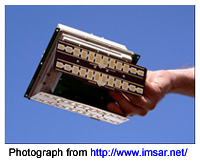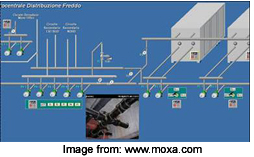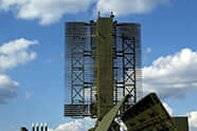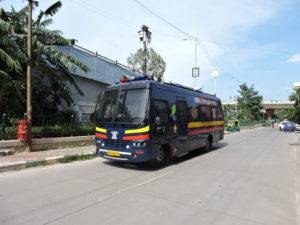Introduction
Sensors are the eyes, ears, and skin of a surveillance network, and the effectiveness of the surveillance set-up in a particular environment is critically dependent on the type and specifications of the sensors employed in the network. How many times have we heard of a jewelry store heist where the surveillance footage was of little use because the resolution of the installed surveillance cameras was too low, or because the lens used was not right, or because the camera did not support BLC (Back-light Compensation).
This article will focus on a few niche sensors and their applications, with specific reference to homeland security. These sensors can enhance the security in implementation of applications related to border and coastal surveillance, critical infrastructure protection and blue force tracking.

Sensors:
Sensors can be broadly categorized as long-range, typically delivering content of lower resolution, and close-range, where the resolution increases as the target approaches. Long-range sensors include Radar, Sonar, SAR (Synthetic Aperture Radar), Satellite, and IR/Optical Cameras; while close-range sensors include fences, fence-mounted detectors, buried cable, volumetric sensors, microwave sensors and optical cameras..
Mini SAR
Synthetic Aperture Radar (SAR) is a form of radar in which multiple radar images are processed to yield higher-resolution images than would be possible by conventional means. Traditionally SARs have weighed in at about 50 kgs. and were extremely bulky; but a new generation of mini and smaller SARs are now available, which weigh anywhere from 1 kg. to 10 kgs., and are significantly more compact from the older SARs. Mini SARs are light-weight, Synthetic Aperture Radars (SAR) that provide the all-weather reconnaissance and geo-location capabilities of a SAR to almost any airborne platforms, including light-weight Unmanned Aerial Vehicles (UAVs).
A SAR payload module provides high-resolution imagery that can penetrate adverse weather conditions such as fog, haze, sandstorms and smoke; camouflage and light foliage, allowing radar-enabled area searches over land and sea. Recent studies have shown that SAR may provide a limited capability for imaging selected underground targets, such as utility lines, arms caches, bunkers, mines, etc.
Application
Mini and smaller SARs can be utilized for anti-naxal field operations, to detect movement in the jungle and to seek out subterranean IEDs. A deployment of such a sensor will be using a remotely controlled light-weight airborne platform.
 SCADA Sensors
SCADA Sensors
SCADA (Supervisory Control and Data Acquisition) systems are designed to monitor and control complex process systems in the industrial sector. They provide automated control in situations where human control could be too slow or dangerous. Common analog signals that SCADA systems monitor and control are levels, temperatures, pressures, flow rate and motor speed. Typical digital signals to monitor and control are level switches, pressure switches, generator status, relays & motors.
Application
SCADA sensors can be integrated in a surveillance network, to provide information on whether critical industrial processes have been tampered with, for critical infrastructure such as power plants (nuclear, thermal), petrochemical plants, and for infrastructure where complex machinery is in use.
Specialized Radar/Sonar
 Apart from the traditional uses of radar/sonar in identifying objects at varying distances, specialized radars/sonars such as Doppler Radars/Sonars can be used to provide additional information on tracked objects. A Doppler Radar is a specialized radar that makes use of the doppler effect to produce velocity data about objects at a distance. It does this by beaming a microwave signal towards a desired target and listening for its reflection, then analyzing how the frequency of the returned signal has been altered by the object’s motion. This variation gives direct and highly accurate measurements of the radial component of a target’s velocity relative to the radar.
Apart from the traditional uses of radar/sonar in identifying objects at varying distances, specialized radars/sonars such as Doppler Radars/Sonars can be used to provide additional information on tracked objects. A Doppler Radar is a specialized radar that makes use of the doppler effect to produce velocity data about objects at a distance. It does this by beaming a microwave signal towards a desired target and listening for its reflection, then analyzing how the frequency of the returned signal has been altered by the object’s motion. This variation gives direct and highly accurate measurements of the radial component of a target’s velocity relative to the radar.
Application
Doppler radars can be used to complement the radar network used for border/coastal surveillance, so that velocity information of the tracked target is also available to operators.
Close-range Sensors
Short-range microwave sensors detect motion in a wide field of view and can be used as motion detectors in close-range situations. Similarly, passive infrared sensors and electrical-field sensors can be used in combination with short-range microwave sensors to identify encroachment in secured premises, with a high Probability of Detection (Pd) while keeping the False/Nuisance Alarm Rate (FAR/NAR) low.
Application
The close-range sensors can be used for protection of temporary encampments, either barricaded or unfenced, in conflict zones or areas where anti-naxal field operations are taking place. It will complement Blue-Force Tracking (BFT) solutions that may be deployed in such situations.
Conclusion
Mistral Solutions offers expertise in the various technologies mentioned above (RF, Microwave, SCADA), and in designing solutions incorporating these technologies so as to deliver results in specific homeland security use cases. In addition, these sensors can be integrated in the Amper nemesis C4ISR command and control application, allowing organizations to tie up with a single vendor for a comprehensive command and control solution.



